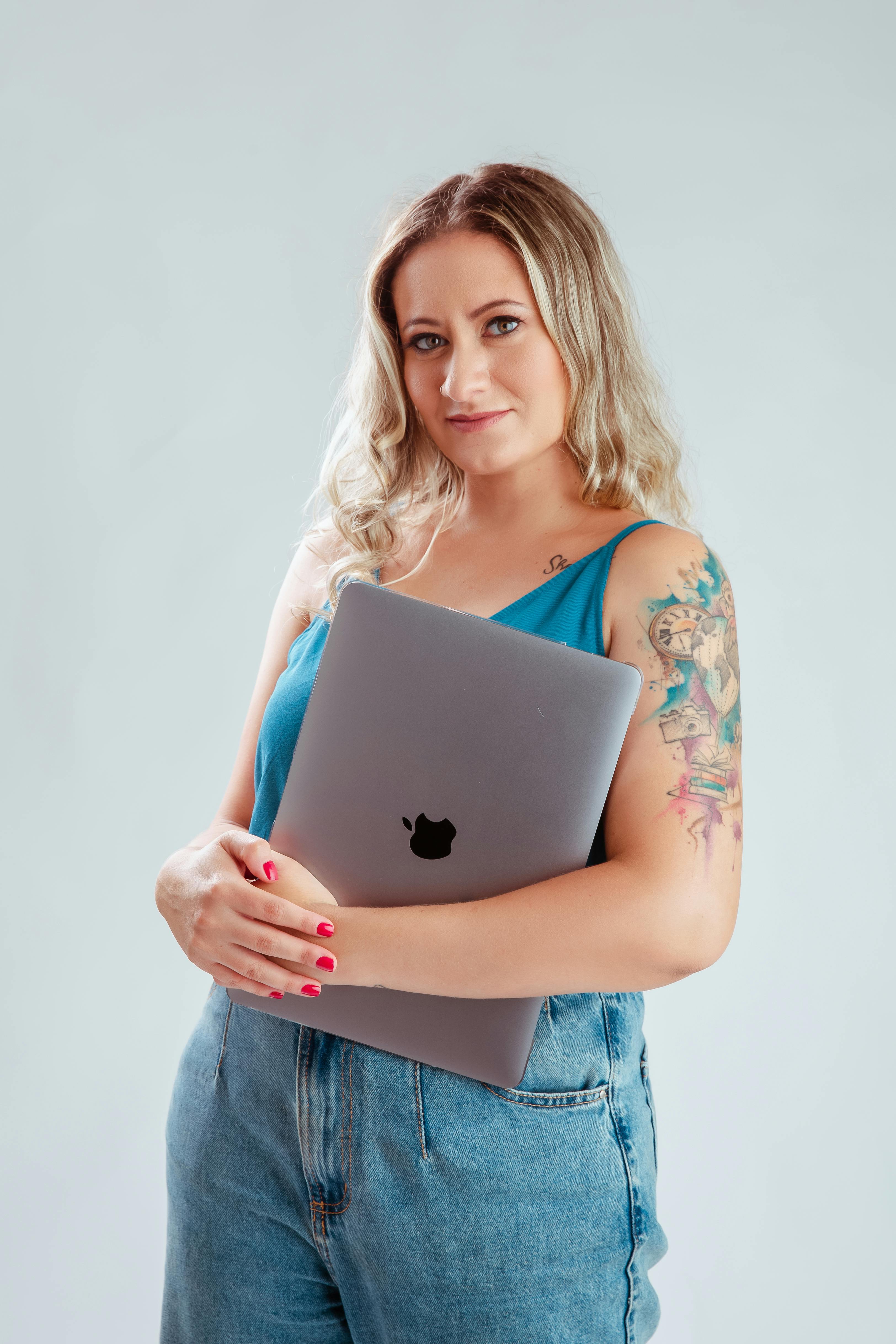
Published:
3 months ago
Mastering Financial Statements in Your Accounting Classes
categories:
Online Tutoring Tips
Exam Preparation
10. Rudd Clothiers is a small company that manufactures tall-men’s suits. The company has used a st...Rudd Clothiers is a small company that manufactures tall-men’s suits. The company has used a standard cost accounting system. In May 2017, 10,600 suits were produced. The following standard and actual cost data applied to the month of May when normal capacity was 13,500 direct labor hours. All materials purchased were used.
Cost Element Standard (per unit) Actual
Direct materials 9 yards at $4.30 per yard $403,620 for 96,100 yards ($4.20 per yard)
Direct labor 1.10 hours at $14.00 per hour $178,178 for 12,460 hours ($14.30 per hour)
Overhead 1.10 hours at $6.60 per hour (fixed $3.80; variable $2.80) $49,800 fixed overhead $37,500 variable overhead
Overhead is applied on the basis of direct labor hours. At normal capacity, budgeted fixed overhead costs were $51,300, and budgeted variable overhead was $37,800.
(a)
Compute the total, price, and quantity variances for (1) materials and (2) labor. (Round answers to 0 decimal places, e.g. 125.)
(1) Total materials variance $
Neither favorable nor unfavorableFavorableUnfavorable
Materials price variance $
UnfavorableNeither favorable nor unfavorableFavorable
Materials quantity variance $
UnfavorableFavorableNeither favorable nor unfavorable
(2) Total labor variance $
FavorableNeither favorable nor unfavorableUnfavorable
Labor price variance $
FavorableUnfavorableNeither favorable nor unfavorable
Labor quantity variance $
UnfavorableFavorableNeither favorable nor unfavorable
(b)
Compute the total overhead variance.
Total overhead variance $
FavorableNeither favorable nor unfavorableUnfavorable
11. A city health inspector threatens to close down a restaurant by issuing a fake health violation...
A city health inspector threatens to close down a restaurant by issuing a fake health violation notice if the owner does not make a financial payment to the inspector. If the restaurant owner does not cooperate, he will not be able to open for business and the publicity will drive away his customers permanently. Faced with a threat of economic loss, the owner makes the payment. Required What type of fraud is this, and what controls can be implemented to prevent or detect the fraud?
12. Purchases Recorded Gross and Net some of the transactions of
Purchases Recorded Gross and Net some of the transactions of Torres Company during August are listed below. Torres uses the periodic inventory method.
August 10 Purchased merchandise on account, $12,000, terms 2/10, n/30.
13 Returned part of the purchase of August 10, $1,200, and received credit on account.
15 Purchased merchandise on account, $16,000, terms 1/10, n/60.
25 Purchased merchandise on account, $20,000, terms 2/10, n/30.
28 Paid invoice of August 15 in full
(a) Assuming that purchases are recorded at gross amounts and that discounts are to be recorded when taken:
(1) Prepare general journal entries to record the transactions.
(2) Describe how the various items would be shown in the financial statements.
(b) Assuming that purchases are recorded at net amounts and that discounts lost are treated as financial expenses:
(1) Prepare general journal entries to enter the transactions.
(2) Prepare the adjusting entry necessary on August 31 if financial statements are to be prepared at that time.
(3) Describe how the various items would be shown in the financial statements.
(c) Which of the two methods do you prefer and why?
13. Weatherguard manufactures mailboxes. The following data represen
Weatherguard manufactures mailboxes. The following data represent transactions and balances for December 2010, the company’s first month of operations.
Purchased direct material on account …………………………$248,000
Issued direct material to production …………………………. 186,000
Accrued direct labor payroll ………………………………….. 134,000
Paid factory rent ……………………………………………… 3,600
Accrued factory utilities ……………………………………… 16,200
Recorded factory equipment depreciation …………………… 15,800
Paid supervisor salary ………………………………………… 6,400
Ending Work in Process Inventory (6,000 units) …………….. 35,000
Ending Finished Goods Inventory (3,000 units)……………… ?
Sales on account ($24 per unit) ………………………………. 648,000
a. How many units were sold in December? How many units were completed in December?
b. What was the total cost of goods manufactured in December?
c. What was the per-unit cost of goods manufactured in December?
d. Prepare the journal entries to record the flow of costs for December. Weatherguard uses a perpetual inventory system and a single Manufacturing Overhead Control account. Assume that actual overhead is included in WIP inventory.
14. Flexible budget. Bryant Company’s budgeted prices for direct materials, direct manufacturing...
Flexible budget. Bryant Company’s budgeted prices for direct materials, direct manufacturing labor, and direct marketing (distribution) labor per attaché case are $43, $6, and $13, respectively. The president is pleased with the following performance report:
Actual output was 10,000 attaché cases. Assume all three direct-cost items shown are variable costs. Is the president’s pleasure justified? Prepare a revised performance report that uses a flexible budget and a static budget.
15. Clonex Labs, Inc., uses a process costing system. The following
Clonex Labs, Inc., uses a process costing system. The following data are available for one department for October:
The department started 175,000 units into production during the month and transferred 190.000 completed units to the next department.
Required:
Compute the equivalent units of production for October assuming that the company uses the weighted-average method of accounting for units andcosts.
16. Purple Fleur S.A., a retailer of floral products, reported cost of goods sold for the year of $75...
Purple Fleur S.A., a retailer of floral products, reported cost of goods sold for the year of $75 million. Total assets increased by $55 million, but inventory declined by $6 million. Total liabilities increased by $45 million, and accounts payable increased by $2 million. The cash paid by the company to its suppliers is most likelyclosestto:
A. $67 million.
B. $79 million.
C. $83 million.
17. One of several ratios that reflects solvency includes the: A. Acid-test ratio B. Current ratio ...
One of several ratios that reflects solvency includes the: A. Acid-test ratio B. Current ratio C. Times interest earned ratio D. Total asset turnover E. Days' sales in inventory What is the company's profit margin ratio for 2014? A. 65% B. 12% C. 3.7% D. 5.9% E. 5% What is the company's gross margin ratio for 2014? Answer: ___
18. Alysha Monet has prepared the following list of statements about depreciation. 1. Depreciation is...
Alysha Monet has prepared the following list of statements about depreciation.
1. Depreciation is a process of asset valuation, not cost allocation.
2. Depreciation provides for the proper matching of expenses with revenues.
3. The book value of a plant asset should approximate its fair value.
4. Depreciation applies to three classes of plant assets: land, buildings, and equipment.
5. Depreciation does not apply to a building because its usefulness and revenue-producing ability generally remain intact over time.
6. The revenue-producing ability of a depreciable asset will decline due to wear and tear and to obsolescence.
7. Recognizing depreciation on an asset results in an accumulation of cash for replacement of the asset. 8. The balance in accumulated depreciation represents the total cost that has been charged to expense since placing the asset in service.
9. Depreciation expense and accumulated depreciation are reported on the income statement.
10. Three factors affect the computation of depreciation: cost, useful life, and salvage value.
Instructions
Identify
each statement as true or false. If false, indicate how to correct the statement.
19. Westview Magazine issued $630, 000 of 15-year, 7% callable bonds payable on July 31, 2016, at 96....
Westview Magazine issued $630, 000 of 15-year, 7% callable bonds payable on July 31, 2016, at 96. On July 31, 2019, Westview called the bonds at 101. Assume annual interest payments. Without making journal entries, compute the carrying amount of the bonds payable at July 31, 2019. Assume all amortization has been recorded properly. Journalize the retirement of the bonds on July 31, 2019. No explanation is required. Without making journal entries, compute the carrying amount of the bonds payable at July 31, 2019. (Assume bonds payable are amortized using the straight-line amortization method.) First, complete the sentence below. The carrying amount of the bonds payable at issuance (July 31, 2016) is $ The on the bonds at issuance amounts to $.
20. The balance sheets of Percy Corp. and Saltz Ltd. on December 31, Year 10, are shown below: Percy
The balance sheets of Percy Corp. and Saltz Ltd. on December 31, Year 10, are shown below:
Percy Saltz
Cash $200,000 $ 4,000
Accounts receivable 50,000 14,000
Inventory 60,000 42,000
Plant 475,000 192,000
Accumulated amortization 125,000) (90,000)
Trademarks—net — 14,000
$660,000 $176,000
Current liabilities $100,000 $ 20,000
Long-term debt 160,000 40,000
Common shares 220,000 60,000
Retained earnings 180,000 56,000
$660,000 $176,000
The fair values of the identifiable net assets of Saltz Ltd. on December 31, Year 10, were as follows:
Cash $ 4,000
Accounts receivable 14,000
Inventory 52,000
Plant 120,000
Trademarks 28,000
218,000
Current liabilities $20,000
Long-term debt 38,000 58,000
Net assets $160,000
In addition to the assets identified above, Saltz owned a taxi license in the City of Moose Jaw. This license expires in 9 years. These licenses are selling in the open market at approximately $40,000.
On January 1, Year 11, Percy Corp paid $175,000 in cash to acquire 7,000 (70%) of the common shares of Saltz Ltd. Saltz’s shares were trading for $20 per share just after the acquisition by Percy.
Required:
Prepare the consolidated balance sheet on January 1, Year 11.
Q20
The balance sheets of Prima Ltd. and Donna Corp. on December 31, Year 5, are shown below:
Prima Donna
Cash $ 370,000 $ 6,400
Accounts receivable 80,000 22,400
Inventory 96,000 67,200
Plant 510,000 163,200
Patents 100,000 22,400
$1,156,000 $281,600
Current liabilities $ 160,000 $ 32,000
Long-term debt 256,000 64,000
Common shares 352,000 96,000
Retained earnings 388,000 89,600
$1,156,000 $281,600
The fair values of the identifiable net assets of Donna Corp. on this date are as follows:
Cash $ 6,400
Accounts receivable 20,000
Inventory 85,000
Plant 192,000
Trademarks 30,000
Patents 60,000
Current liabilities 32,000
Long-term debt 70,000
In addition to the assets identified above, Donna owned a significant number of Internet domain names, which are unique alphanumeric names that are used to identify a particular numeric Internet address. These domain names can be sold separately and are estimated to be worth $50,000. On January 1, Year 6, Prima Ltd. paid $351,000 in cash to acquire 90% of the common shares of Donna Corp.
Required:
(a) Prepare the consolidated balance sheet on January 1, Year 6, under entity theory.
(b) Now assume that an independent business valuator valued the NCI at $35,000 at the date of acquisition. What accounts on the consolidated balance would change, and at what amount would they be reported?
(c) Assume that Prima is a private entity, uses ASPE, and chooses to use the cost method to account for its investment in Donna. Prepare Prima’s January 1, Year 6, separate-entity balance sheet after the business combination.
Q21
On January 1, Year 5, FLA Company issued 6,300 ordinary shares to purchase 9,000 ordinary shares of MES Company. Prior to the acquisition, FLA had 180,000 and MES had 10,000 ordinary shares outstanding, which were trading at $5 and $3 per share, respectively. The following information has been assembled for these two companies just prior to the acquisition:
FLA Company MES Company
Plant assets Carrying amount Fair value Carrying amount Fair value
Current assets $ 60,000 $70,000 $20,000 $25,000
40,000 47,500 10,000 11,200
Ordinary shares $100,000 $30,000
Retained earnings $ 30,000 $10,000
Long-term debt 35,000 12,500
Current liabilities 15,000 19,000 2,500 3,200
20,000 20,000 5,000 5,000
$100,000 $30,000
Required:
(a) Prepare a consolidated statement of financial position for FLA Company and its non–wholly owned subsidiary at January 1, Year 5, under each of the following:
(i) Proprietary theory
(ii) Parent company theory
(iii) Parent company extension theory
(iv) Entity theory
(b) Which of the above theories is required under IFRS 3?
Q22
The condensed financial statements for OIL Inc. and ERS Company for the year ended December 31, Year 5, follow:
OIL ERS
Revenues $ 900,000 $ 300,000
Expenses 660,000 200,000
Net income $ 240,000 $ 100,000
Retained earnings, 1/1/Year 5 $ 800,000 $ 200,000
Net income 240,000 100,000
Dividends paid 90,000 0
Retained earnings, 12/31/Year 5 $ 950,000 $ 300,000
Cash $ 80,000 $ 110,000
Receivables and inventory 400,000 170,000
Patented technology (net) 900,000 300,000
Equipment (net) 700,000 600,000
Total assets $2,080,000 $1,180,000
Liabilities $ 600,000 $ 410,000
Common shares 530,000 470,000
Retained earnings 950,000 300,000
Total liabilities and equities $2,080,000 $1,180,000
On December 31, Year 5, after the above figures were prepared, OIL issued $240,000 in debt and 12,000 new shares to the owners of ERS for 80% of the outstanding shares of that company. OIL shares had a fair value of $40 per share. OIL also paid $30,000 to a broker for arranging the transaction. In addition, OIL paid $32,000 in stock issuance costs. ERS’s equipment was actually worth $690,000, but its patented technology was appraised at only $280,000.
Required:
What are the consolidated balances for the year ended/at December 31, Year 5, for
the following accounts?
(a) Net income
(b) Retained earnings, 1/1/Year 5
(c) Equipment
(d) Patented technology
(e) Goodwill
(f) Liabilities
(g) Common shares
(h) Non-controlling interests
Q23
The July 31, Year 3, balance sheets of two companies that are parties to a business combination are as follows:
Ravinder Corp. Robin Inc.
Carrying amount Carrying amount Fair value
Current assets $1,600,000 $ 420,000 $468,000
Plant and equipment 1,330,000 1,340,000 972,000
Accumulated depreciation (250,000) (500,000)
Patents—net — — 72,000
$2,680,000 $1,260,000
Current liabilities $1,360,000 $ 252,000 252,000
Long-term debt 480,000 360,000 384,000
Common shares 720,000 168,000
Retained earnings 120,000 480,000
$2,680,000 $1,260,000
In addition to the assets identified above, Ravinder Corp. attributed a value of $100,000 to a major research project that Robin Inc. was working on. Robin Inc. feels that it is within a year of developing a prototype for a state-of-the-art biomedical device. If this device can ever be patented, it could be worth hundreds of thousands of dollars.
Effective on August 1, Year 3, the shareholders of Robin Inc. accepted an offer from Ravinder Corp. to purchase 80% of their common shares for $1,040,000 in cash. Ravinder Corp.’s legal fees for investigating and drawing up the share purchase agreement amounted to $25,000.
Required:
(a) Prepare the journal entries in the records of Ravinder Corp. to record the share acquisition and cost of legal fees.
(b) Prepare a schedule to calculate and allocate the acquisition differential. Explain the rationale for the accounting treatment of the $100,000 attributed to the research project.
(c) Prepare Ravinder Corp.’s consolidated balance sheet as at August 1, Year 3. Assume there were no transactions on this date other than the transactions described above.
Q24
When accounting for the acquisition of a non–wholly owned subsidiary, the parent can use entity theory or parent company extension theory to account for the business combination. Access the 2011 consolidated financial statements for BCE Inc. by going to investor’s relations section of the company’s website. Answer the questions below for 2011. Round percentages to one decimal point and other ratios to two decimal points. For each question, indicate where in the financial statements you found the answer, and/or provide a brief explanation.
(a) Which theory of consolidation is used to value non-controlling interest at the date of acquisition?
(b) What portion of the additions to property, plant, and equipment during the year came from business combinations, and what portion came from direct purchases?
(c) What percentage of shareholders’ equity at the end of the year pertains to non-controlling interests?
(d) How were costs directly attributable to the business combination accounted for?
(e) Were any of the subsidiaries controlled, even though the percentage ownership was equal to or less than 50%? If so, what explanation was provided to explain how control was achieved with ownership of 50% or less?
(f) Assume that the company used the other acceptable theory of consolidation for valuing non-controlling interest and that the fair value of the subsidiary as a whole was greater than the fair value of the identifiable net assets at the date of acquisition. How would this change in theory affect the debt-to-equity ratio at the date of acquisition?
Q25
Access the 2011 consolidated financial statements for Barrick Gold Corporation by going to investor’s relations section of the company’s website. For each question, indicate where in the financial statements you found the answer, and/or provide a brief explanation. (Some questions may not be applicable.)
(a) Which theory of consolidation is used to value non-controlling interest at the date of acquisition?
(b) What portion of the additions to property, plant, and equipment during the year came from business combinations, and what portion came from direct purchases?
(c) What percentage of shareholders’ equity at the end of the year pertains to non-controlling interests?
(d) How were costs directly attributable to the business combination accounted for?
(e) Were any of the subsidiaries controlled, even though the percentage ownership was equal to or less than 50%? If so, what explanation was provided to explain how control was achieved with ownership of 50% or less?
(f) Assume that the company used the other acceptable theory of consolidation for valuing non-controlling interest and that the fair value of the subsidiary as a whole was greater than the fair value of the identifiable net assets at the date of acquisition. How would this change in theory affect the debt-to-equity ratio at the date of acquisition?






